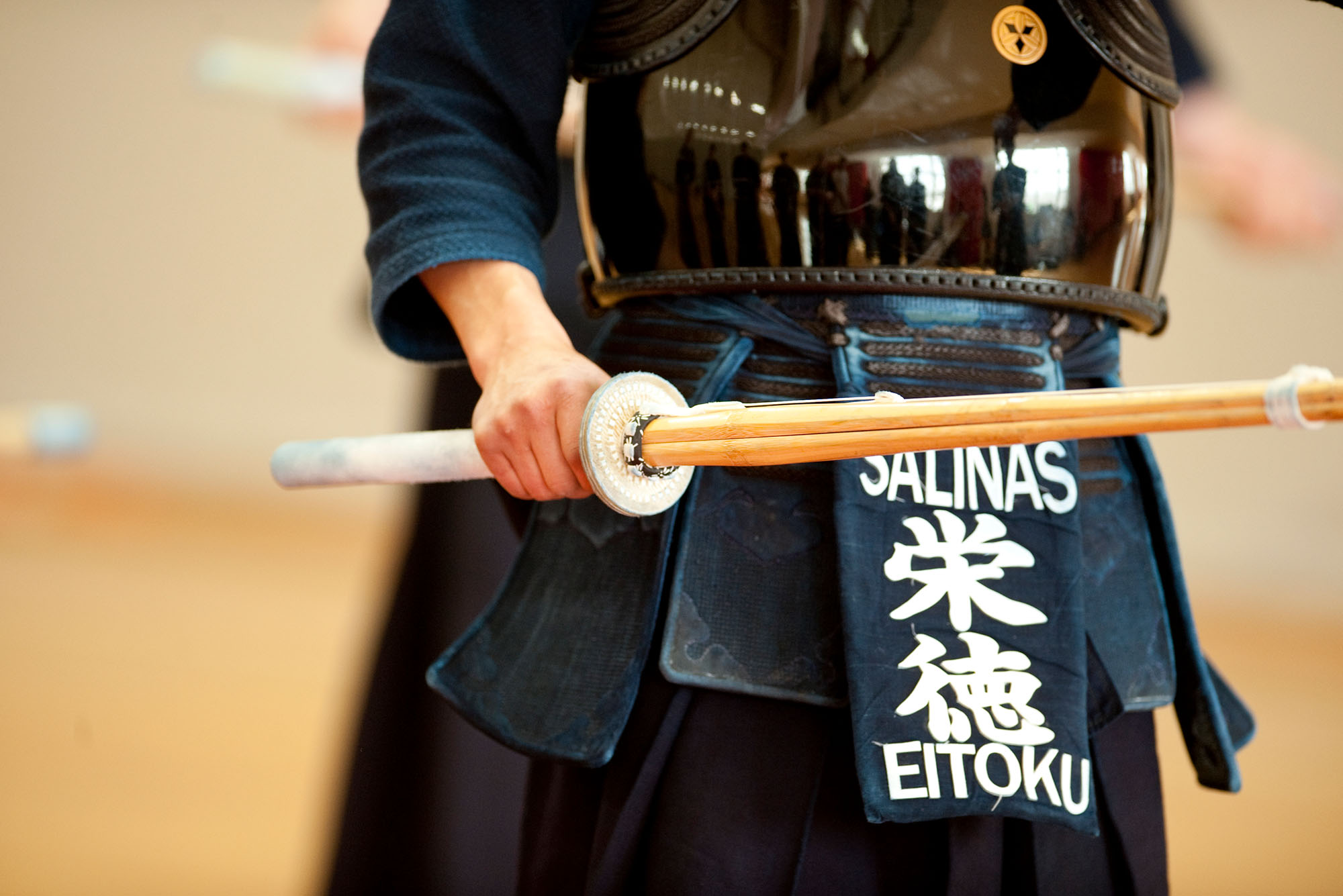BU Kendo Association: Rookies, Vets Flock to the Sport for Its Action and Discipline
BU Kendo Association: Rookies, Vets Flock to the Sport for Its Action and Discipline
BU Kendo Association: Rookies, Vets Flock to the Sport for Its Action and Discipline
You are more likely to hear a kendo practice before you see it. Bamboo swords—shinai—swish through the air and collide, bare feet slap the hardwood floor, and fighters let out a yell whenever they strike.
The sword-based martial art that we now call kendo began in Japan in the 1700s, originating from military leaders discovering that their soldiers could use bamboo swords for full-contact training without risking fatal injuries. Its current name, kendo, translated to “principles of the sword,” dates to the early 1900s.
Founded in 2005, the BU Kendo Association has about 50 members, and is coached by Alex Eitoku (CAS’12) and Reina Iwase (CAS’17, GRS’18). Group members’ experience ranges from none to nine years. While many members join the club for the fighting aspect, the veterans say the spiritual side of it keeps them around.
“There’s a Japanese word we use to refer to the proper way to fight, which is ki-ken-tai-ichi,” says association president Daniel Gruspier (ENG’22). “Ki means spirit, ken means sword, tai means body, and ichi means one. Every one of your hits should be one fluid motion.”
A kendo match—shiai—is won when a participant scores two points, or ippon. Points are scored when one participant hits either the head, wrist, or side of their opponent. But it’s not that easy. In addition, the striker has to plant their foot on the ground as the sword makes contact, follow through with the strike, and yell—called a kiai—at the same time.
Team captain Kelton Nguyen (ENG’23) has practiced kendo for nine years. Growing up in Randolph, Mass., he started kendo because he thought it looked cool when his dad tried it at the suggestion of a friend.
At a recent practice, Nguyen quickly moves down the basketball court that serves as a dojo—a martial arts practice hall—while the rest of the team practices striking. Many of his teammates (some joined after finding the club at Splash in September) go at a much slower pace, mastering the motions before adding speed.
Both the veterans and the rookies say they like the repetition.
“I wanted to do something physical, and kendo seemed like it had a lot of structure,” says Aylin Manav (ENG’24), a native of Turkey, who signed up last year. “I love structure and having rules to follow. Especially when you start doing really intense practices, you don’t really think much about it because your body knows the rules.”
Luis Balaguer (LAW’24) first tried kendo back home in Miami, Fla., right before the pandemic began. Having previously done karate, muay thai, and jiu jitsu, he was looking for a less physically strenuous martial art after a series of dislocated shoulders.
“I was just thinking, what is a martial art that I can do until I’m 60 years old, with a high skill cap so that someone who’s 60 can whoop someone who’s 24?” Balaguer says. “That’s kendo. In kendo, there’s obviously a huge physical component, but there’s also a high skill cap when it comes to the spiritual, mental, and strategic parts.”
The structure of practices is rigid, and individuals have to be disciplined to make the shinai become an extension of their arm. The sword weighs about a pound, but feels heavier as a match goes on.
Despite competing alone in a shiai, Nguyen enjoys the collaborative side of the sport. In a recent practice, he and teammates sparred for a few minutes, stoically bowed to one another in the tradition of the sport, and then met in the center to talk animatedly about the match.
“Everyone in the kendo community is here to help you get better,” Nguyen says. “No one is out to get you. All of my senpai [a person with more experience] when I was at my dojo would always give me tips here and there on how I could improve. That’s how I became the kendo practitioner that I am today.”
The matches themselves are loud. The two fighters circle each other and try to take any opportunity they see. The two shinai collide, as well as making contact with the fighter’s helmet, wrists, and chest protectors. Spectators wince at quiet hits when a shiai is in progress. That indicates the shinai missed the heavy padding while still making contact with the fighter.
In normal years, the club competes at four tournaments: one in the fall and three in the spring. Most tournaments have been canceled by COVID this year, but Gruspier says he’s hoping the team can attend this spring’s Harvard International Shoryuhai Intercollegiate Kendo Tournament at Harvard University.
BU kendo club members appreciate how the sport has taught them discipline and mindfulness. They say the mental and spiritual aspects hold just as much, if not more, importance than the physical parts.
“Kendo isn’t just hitting people with a sword or putting the armor on and dodging and blocking,” Balaguer says. “It’s also the perspective you go into life with. I do kendo in law school. I make sure I’m always super on it and performing at my highest possible level.”
BU Kendo Association has practices three times a week at FitRec: Saturdays and Sundays, from 10 am to noon, on Court 3 on the second floor, and Wednesdays, from 8 to 10 pm, in one of the multiuse spaces behind the rock wall. Email buka@bu.edu for more information.

Comments & Discussion
Boston University moderates comments to facilitate an informed, substantive, civil conversation. Abusive, profane, self-promotional, misleading, incoherent or off-topic comments will be rejected. Moderators are staffed during regular business hours (EST) and can only accept comments written in English. Statistics or facts must include a citation or a link to the citation.